Introduction
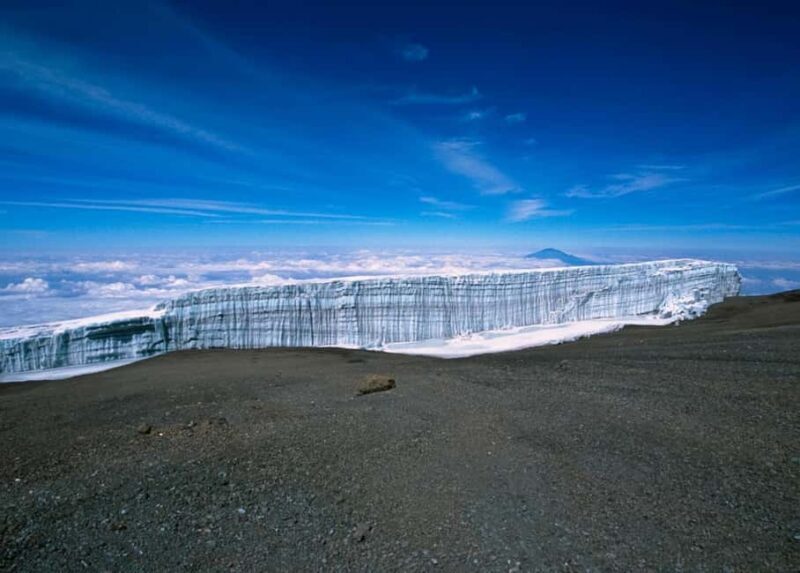
Our review focuses on the 7-Day Kilimanjaro Lemosho Route Trek with Summit Attempt, offered by MASENGOTA SAFARIS. While we haven’t personally climbed Kilimanjaro, this route consistently draws praise for its stunning scenery and gradual acclimatization process.
What we love most about this experience are the breathtaking landscape changes, the expert guidance, and the value packed into the price. The route’s natural diversity keeps your eyes engaged, from rainforest to icy summit. However, a potential challenge is the mid-range duration, which requires good physical preparation and mental determination.
This trek suits those serious about reaching Africa’s highest point, especially travelers who enjoy scenic variety and well-supported guided tours. If you’re looking for an authentic, well-organized climb with experienced guides, this option could be a great fit.
You can check availability for your dates here:Key Points
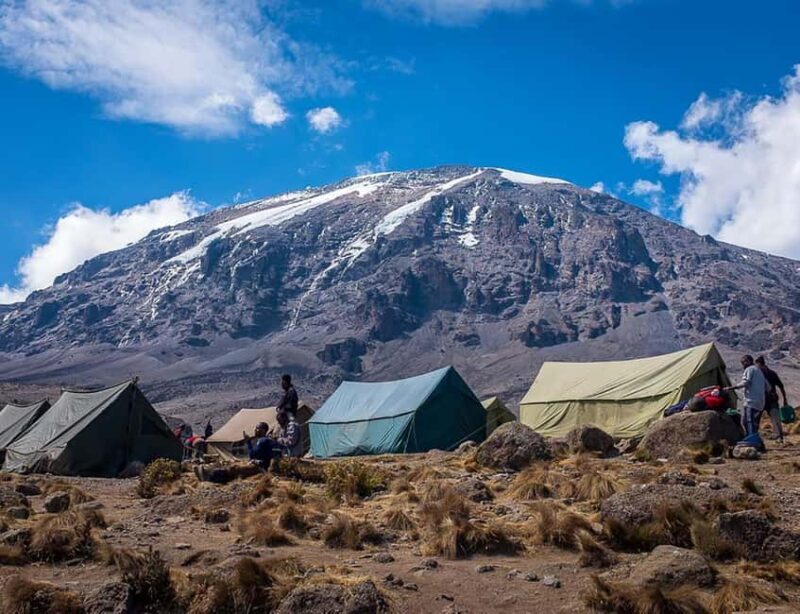
- Gradual acclimatization through varied terrains increases your chances of summit success.
- Expert guides with local knowledge enhance safety and enrich the experience.
- A well-paced itinerary balances trekking and rest, making it accessible for motivated hikers.
- Stunning scenery from rainforests to glaciers offers unforgettable photo opportunities.
- The price of $2,500 reflects good value considering all included services and support.
- The route’s length and physical demands mean preparation and fitness are essential.
Here are more experiences we've reviewed in Kilimanjaro National Park
Exploring the Kilimanjaro Lemosho Route
The Lemosho Route is often praised for its scenic beauty and relatively gentle acclimatization profile compared to other routes. Starting at Londorossi Gate (2,100m), your journey begins in lush rainforest, where you’ll get your first glimpses of wildlife like monkeys and colorful birds. The dense greenery and humidity make it a refreshing start, but you’ll quickly notice the change as you ascend to drier terrain.
Day 1: Londorossi Gate to Mti Mkubwa
The first leg introduces trekkers to the tropical side of Kilimanjaro, with thick foliage and a cool climate. The trail is well-trodden, and the trek usually takes around 3-4 hours. Guides are knowledgeable and friendly, often sharing insights about local flora and fauna. Camp at Mti Mkubwa, where the atmosphere is lively yet peaceful, and the views of the surrounding forest are calming.
Day 2: Mti Mkubwa to Shira 1 Camp
Moving onto the Shira Plateau, you’ll notice the landscape transforms into open, high-altitude moorland. The trail is longer—around 4-5 hours—and offers sweeping vistas of the surrounding wilderness. This section is critical for acclimatization, and many guides emphasize the importance of pacing. The panoramic views of Kilimanjaro’s snow-capped peak start to become more prominent here, giving you motivation for the days ahead.
More Great Tours NearbyDay 3: Shira 1 to Shira 2 Camp
A shorter, easier day makes this a good opportunity for your body to adjust to higher elevations. The terrain remains open, and you’ll enjoy expansive views with fewer technical challenges. Some travelers remark on how this part feels like a gentle walk, but with the benefit of higher altitude to prepare you for summit push.
Love being outdoors? Check out these other hiking spots we've covered in Kilimanjaro National Park
- 1 day Kilimanjaro Hike Marangu Route from Arusha or Moshi.
- 6-Day Kilimanjaro Machame Route Hiking Tour
- 8-Days Mount Kilimanjaro Lemosho Route Trekking Tour.
- 8 Days Kilimanjaro Trekking Adventure, Lemosho Route for all
- Kilimanjaro: 6-Day Machame Route Trekking Adventure
- 4 days Kilimanjaro Short Hiking via Marangu Route
Day 4: Shira 2 to Barranco Camp via Lava Tower
This is an important acclimatization day, passing through Lava Tower at 4,640m. While the ascent might feel steep, guides often describe this as a “climb high, sleep low” strategy—boosting your body’s ability to handle altitude. The descent into Barranco Valley is scenic, with giant Senecio plants creating a surreal landscape. Guides here are often praised for their local expertise and safety awareness, which is reassuring when tackling a tricky milestone like Lava Tower.
Day 5: Barranco to Karanga Camp via Barranco Wall
The Barranco Wall is the day’s highlight—an exhilarating climb that many reviewers say is less technical than it looks, thanks to guided assistance. This part of the trek is physically demanding but incredibly rewarding, offering one of the route’s most iconic views. Afterward, you’ll descend into the Karanga Valley, where the landscape becomes more rugged yet stunning.
Day 6: Karanga to Barafu Camp
A relatively short trek brings you to Barafu Camp, the base camp for the summit attempt. The atmosphere here is charged with anticipation. The camp is set against a stark, rocky backdrop, perfect for resting before the final push. Guides emphasize the importance of staying hydrated and rested, as the midnight summit climb requires mental focus and stamina.
Day 7: Summit Day to Uhuru Peak
The early start begins around midnight, as you trek toward Stella Point and then Uhuru Peak, the highest point in Africa at 5,895 meters. The climb involves snow and ice, so proper gear and pacing are critical. Guides are highly experienced, often sharing tips for conserving energy and coping with altitude. The reward—standing on the roof of Africa—is breathtaking, and many travelers say the sense of achievement makes the challenging ascent worthwhile.
Descent and Final Day
Descending to Mweka Camp is quick, and the trail through the rainforest on the last day offers a lush, cool environment to recover. The sense of accomplishment is palpable, and you’ll receive your summit certificate at Mweka Gate, marking the completion of your journey.
What’s Included and What You Should Consider
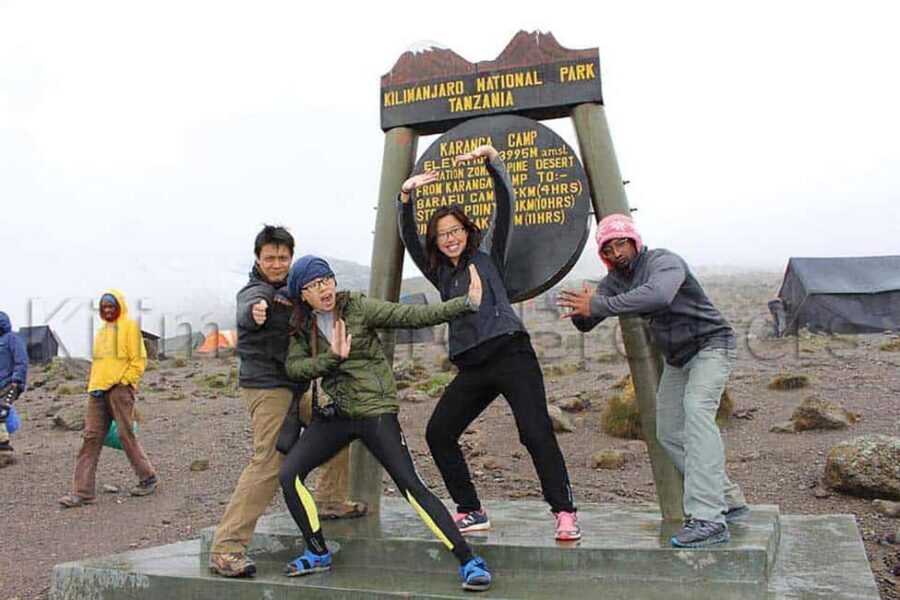
For $2,500 per person, this package offers significant value. All park fees, camping equipment, rescue services, three daily meals, drinking water, porters, and a professional English-speaking guide are included. The support crew’s professionalism is often highlighted, with guides sharing local knowledge and ensuring safety throughout.
However, you’ll need to arrange your own personal gear, travel insurance, visas, and cover personal expenses. The tour’s duration—7 days—strikes a balance between offering enough acclimatization time and avoiding overly extended treks that can become tiring. The itinerary is designed for trekkers who are physically prepared; training at least two months beforehand is highly recommended.
Guides and Support
Reviewers consistently mention the guides’ expertise and friendliness, with some noting that they go beyond expectations, often sharing cultural insights and ensuring safety during tricky sections like Lava Tower and Barranco Wall. The team size isn’t specified but is likely moderate, making the experience more personalized.
Accommodations and Camping
All nights are spent in tents, usually set up by the crew, in a communal camping environment. This outdoor experience enhances the adventure feel, and most travelers find the campsites comfortable enough given the circumstances.
Food and Hydration
Three meals a day are provided, with water supplied throughout the trek. Packing snacks is recommended for energy boosts, especially during summit night. Many reviewers emphasize staying well-hydrated as key to a successful climb.
The View from the Top and the Overall Experience
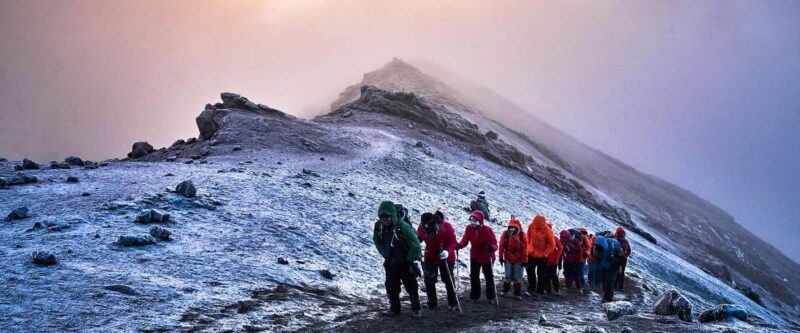
Standing atop Uhuru Peak at 5,895 meters is undeniably a life-changing moment. The views of glaciers, the vast African plains, and the curvature of the earth are jaw-dropping. Guides often share that the combination of changing landscapes along the route and the sense of accomplishment make this trek unforgettable.
While the physical challenge is real, the gradual ascent and expert guidance make the route accessible for motivated hikers. The scenery constantly shifts—from dense rainforests and moss-covered trees to barren volcanic deserts and icy summits—each step revealing a different facet of Kilimanjaro’s diverse environment.
Is This Trek Right for You?
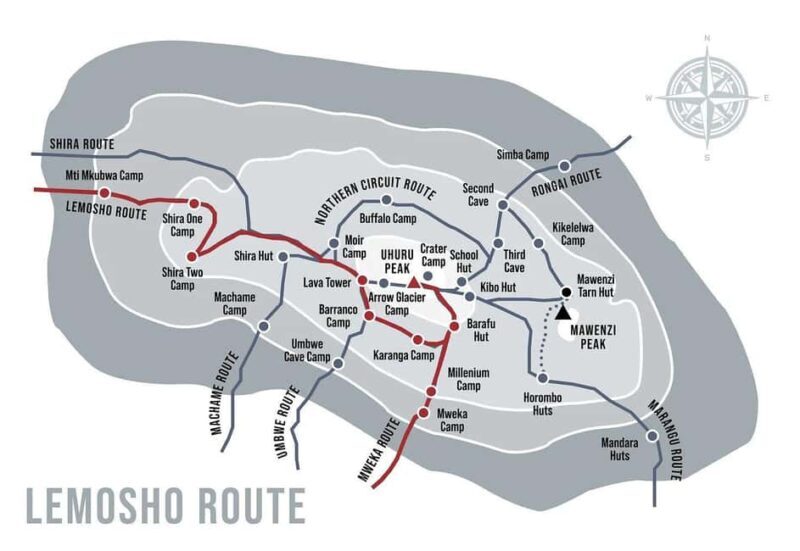
This Kilimanjaro adventure is best suited for travelers who are physically active and prepared for multiple days of trekking at high altitude. It’s ideal for those who want a more scenic and gradual approach compared to harsher routes, with plenty of opportunities for rest and acclimatization.
If you value expert guidance, stunning landscapes, and a route that balances challenge with support, this trek offers solid value. However, those with pre-existing health conditions or limited mobility should carefully consider their suitability and consult their doctor.
The Sum Up
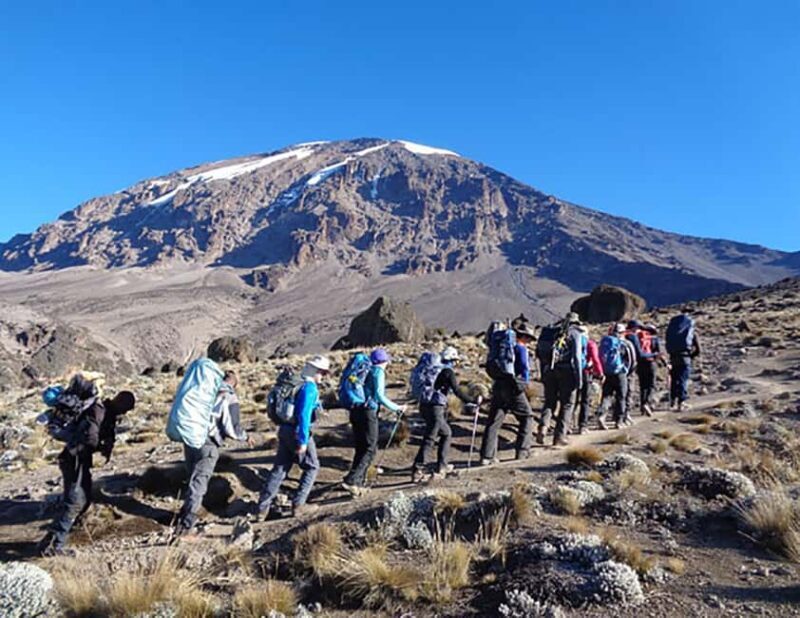
The 7-Day Kilimanjaro Lemosho Route Trek provides a thoughtfully designed, scenic, and well-supported opportunity to conquer Africa’s tallest mountain. Its mix of lush forests, high-altitude deserts, and icy peaks makes it a visually stunning adventure, backed by experienced guides committed to safety and local knowledge.
For travelers eager for a challenging yet rewarding climb, this route offers excellent value, especially given the inclusion of all necessary park fees, camping, and support. It’s a great choice for those who don’t want to rush their ascent and are prepared to invest in their physical fitness ahead of time.
Overall, if you’re looking for an authentic Kilimanjaro experience with a focus on scenery and support, the Lemosho Route by MASENGOTA SAFARIS balances adventure, comfort, and achievement beautifully.
FAQ
What is included in the price?
All park fees, camping equipment, rescue fees, three meals daily, drinking water, porter services, and a professional English-speaking guide are included in the $2,500 price.
Do I need to bring my own gear?
Yes, personal trekking gear is not included, so you’ll need to pack your own clothing and equipment suited for high-altitude trekking.
How long is the trek?
The trek lasts 7 days, with the option to add an extra day if you want more acclimatization or rest.
Is this route suitable for beginners?
While the route is considered one of the more scenic and gradual options, it still requires good physical fitness and mental preparation due to the altitude and length.
What altitude will I be trekking at?
You will reach up to 5,895 meters at Uhuru Peak, but the route includes multiple acclimatization points to improve chances of success.
Are meals provided during the trek?
Yes, three meals a day are included, along with drinking water. Snacks are recommended for extra energy.
Can I pay later or reserve without immediate payment?
Yes, you can reserve your spot and pay later, offering flexibility in planning.
What if I experience altitude sickness?
Guides are trained to handle emergencies, and rescue fees are included. It’s important to prepare physically and follow your guide’s advice throughout.
Is it suitable for children or pregnant women?
No, this trek is not recommended for children under 12, pregnant women, or anyone with mobility, heart, or respiratory issues.
This detailed review hopes to give you a clear picture of what to expect from the Kilimanjaro Lemosho Route trek. Proper preparation, a positive attitude, and trusting your guides will help make this a memorable achievement.
You can check availability for your dates here:More Hiking & Trekking Tours in Kilimanjaro National Park
- 6-Day Marangu Route Christmas Kilimanjaro Trek
- Kilimanjaro: Lemosho Route 7-Day Trek
- Kilimanjaro: Shira plateau to Cathedral point 3872m Day hike
- Experience Our Top Best Kilimanjaro Day Hiking Machame Route
- 1-Day Kilimanjaro Hiking Via Machame Route Adventures
- Kilimanjaro: Rongai Route 6-Day Hiking Adventure
More Tours in Kilimanjaro National Park
- Kilimanjaro: 6-Day Luxury Climbing Tour with Marangu Route
- 7-Days Rongai Route Kilimanjaro Climbing Group Joining Tour
- 7 Days Kilimanjaro Hiking Tour; Summit Lemosho Route
- #1. Kilimanjaro 5-days hiking Marangu joining tour
- Kilimanjaro: 7-Day Machame Route Hiking Tour
- Authentic Maasai village & Cultural tour
More Tour Reviews in Kilimanjaro National Park
- Kilimanjaro: 6-Day Full Moon Machame Route Climb
- Kilimanjaro: 6-Day Luxury Climbing Tour with Marangu Route
- 6-Day Marangu Route Christmas Kilimanjaro Trek
- 7-Days Rongai Route Kilimanjaro Climbing Group Joining Tour
- Kilimanjaro: Lemosho Route 7-Day Trek
- Kilimanjaro: Shira plateau to Cathedral point 3872m Day hike
Still browsing? Here are more Kilimanjaro National Park experiences we've covered recently
- Kilimanjaro: 6-Day Full Moon Machame Route Climb
- Kilimanjaro: 6-Day Luxury Climbing Tour with Marangu Route
- 6-Day Marangu Route Christmas Kilimanjaro Trek
- 7-Days Rongai Route Kilimanjaro Climbing Group Joining Tour
- Kilimanjaro: Lemosho Route 7-Day Trek
- Kilimanjaro: Shira plateau to Cathedral point 3872m Day hike
- Experience Our Top Best Kilimanjaro Day Hiking Machame Route
- 1-Day Kilimanjaro Hiking Via Machame Route Adventures
- Kilimanjaro: Overnight Camp at Mandara Huts
- Kilimanjaro: Rongai Route 6-Day Hiking Adventure
- 7 Days Kilimanjaro Hiking Tour; Summit Lemosho Route
- 5 Days Umbwe Route Kilimanjaro Climbing From Arusha/Moshi
